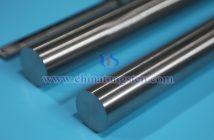Tungsten contacts are a type of electrical contact material, with their primary chemical composition including the refractory metal tungsten along with copper, silver, and other metal elements. They exhibit excellent thermal, mechanical, and electrical properties, making them widely used in the power sector. Depending on their chemical composition, tungsten contacts can be classified into tungsten-copper (WCu) contacts and Silver Tungsten (AgW) contacts.

Silver Tungsten contact is materials formed by combining silver and tungsten, characterized by a structure where tungsten serves as the hard phase and silver acts as the binding phase, creating a two-phase pseudo-alloy.
In terms of physicochemical properties, AgW contacts showcase a “synergy of advantages” between silver and tungsten—they inherit tungsten’s traits such as high melting point, high density, high strength, high hardness, and low thermal expansion coefficient, while retaining silver’s benefits like low contact resistance and good electrical and thermal conductivity. Additionally, this material offers multiple practical properties: outstanding wear resistance to withstand long-term friction, strong heat resistance for high-temperature environments, good chemical stability with resistance to acid and alkali corrosion, and in electrical applications, excellent arc erosion resistance, anti-welding properties, and strong oxidation resistance, ensuring stable performance over extended use.
However, the properties of silver tungsten contacts are not fixed and are influenced by the silver-to-tungsten ratio. Generally, as the silver content increases, the alloy’s electrical and thermal conductivity improves, but its melting point, density, and hardness decrease. For example: AgW30 has a density of 11.8–12.2 g/cm3 and hardness of 75 HB; AgW55 has a density of 13.6–13.9 g/cm3 and hardness of 115 HB; AgW70 has a density of 14.7–15.1 g/cm3 and hardness of 150 HB; AgW80 has a density of 16.1–16.5 g/cm3 and hardness of 180 HB.

The production process for silver tungsten contacts involves the following steps: first, a precursor solution containing silver is thoroughly mixed with a sodium tungstate solution, followed by the addition of acid to adjust the pH of the mixture; next, a reducing agent is added to the adjusted solution, generating silver powder coated with a tungsten-based sol through a reaction; finally, the prepared silver powder is heat-treated in a reducing atmosphere to produce the target AgW contact. This production method involves an initial combination of silver and tungsten via a solution reaction (in the form of sol coating), followed by structural consolidation through heat treatment. This approach, typical of powder metallurgy composite material preparation, ensures uniform bonding of the silver and tungsten phases.
In terms of applications, silver tungsten contacts are core components in various electrical devices, widely used in relays, contactors, load switches, electrical switches, and instrumentation. Their role is to connect circuits, carry current, and interrupt current under normal or fault conditions—functions critical to the stability and reliability of equipment operation. Specifically, in relays, they act as the “executors” of circuit switching commands, ensuring accurate implementation of control logic; in instrumentation, they serve as “stabilizers” for current transmission, ensuring efficient and stable current signal delivery to support measurements. The ability of Silver Tungsten contacts to excel in these scenarios stems from their arc erosion resistance and anti-welding properties, enabling them to maintain structural and performance stability even under high-frequency current switching or complex conditions, thus providing robust support for the continuous and safe operation of various electrical devices.



